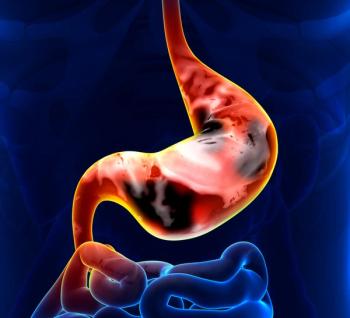
Oncology NEWS International
- Oncology NEWS International Vol 7 No 11
- Volume 7
- Issue 11
Tumor Markers May Fail to Detect, Exclude Colon Cancer
TORONTO--New research suggests that tumor marker levels for colorectal cancer do not consistently indicate the presence of malignant tissue. A German study revealed that 10 of 34 patients with colorectal cancer had normal carcinoembryonic antigen (CEA) levels and 16 had normal CA19-9 levels. In addition, a California study found that patients with elevated CEA levels did not necessarily have disease recurrence.
TORONTO--New research suggests that tumor marker levels for colorectal cancer do not consistently indicate the presence of malignant tissue. A German study revealed that 10 of 34 patients with colorectal cancer had normal carcinoembryonic antigen (CEA) levels and 16 had normal CA19-9 levels. In addition, a California study found that patients with elevated CEA levels did not necessarily have disease recurrence.
"Tumor markers are an inexpensive follow-up procedure for identifying the recurrence of colorectal cancer," said Hans Biersack, MD, PhD, president of the World Federation of Nuclear Medicine and Biology and professor of nuclear medicine, University of Bonn, Germany. "In general," he said, "an increase in tumor marker levels suggests increased cancer activity. However, we found that 59% and 70% of the patients with normal levels of CEA and CA19-9, respectively, had tumors present."
The German protocol included 45 patients with either confirmed colorectal cancer and a suspicion of recurrence or a suspected primary tumor. Each patient was assessed for CEA and CA19-9 levels and also received a whole-body 18F-fluorodeoxyglucose positron emission tomography (FDG-PET) scan. Path-ologic findings were confirmed by CT scan, MRI, ultrasound, surgery, or clinical follow-up.
Overall, 34 of 45 patients had confirmed colorectal cancer and 11 had no malignancy. CEA identified 31 patients correctly--24 positive and 7 negative; CA19-9 was correct in 26 patients--19 positive and 7 negative. FDG-PET was 100% accurate in the detection of tumor. It identified all 34 patients with disease and 8 with no disease. There were three false-positive findings with PET.
In addition, when CEA and CA19-9 levels were elevated, FDG-PET correctly identified 93% and 95% of the lesions, respectively. In patients with normal CEA and CA19-9 levels, FDG-PET correctly identified 94% and 96% of the lesions, respectively.
Speaking at a press conference, lead author Dr. Hans Bender, professor of nuclear medicine, University of Bonn, said: "Our data indicate that normal tumor marker levels do not exclude the presence of malignant tissue. If there are indications of tumor recurrence, such as lesions detected by CT or ultrasound or patient discomfort, I would recommend whole body FDG-PET independent of CEA or CA19-9 levels."
A study by the Northern California PET Imaging Center, Sacramento, included 44 patients with elevated CEA levels, 30 of whom had subsequently confirmed malignancies. Of these 44 patients, 27 had negative CT scans, 17 had not had CT examination. All patients underwent whole body FDG-PET.
"We found that FDG-PET was highly sensitive for disease recurrence, finding the disease in 28 of 30 patients with tumors. It was much more accurate than using the CEA levels as an indication of disease," said Peter Valk, MD, medical director of the Center.
PET gave true-positive results in 70% of patients who had negative CT findings," said Elma Abella-Columna, MD, a clinical fellow at the Center. "Where available, PET should be part of the diagnostic workup in these patients if there is suspicion of disease recurrence," she said. Recurrence may be suspected in the presence of rising CEA levels, pain, or a mass felt on physical exam.
"When PET is positive and surgery is intended," she said, "CT may still be used for preoperative anatomic evaluation. However, for diagnosis of recurrence, PET does a much better job."
Articles in this issue
about 27 years ago
Vinorelbine/Cisplatin Improves Survival In Advanced NSCLCabout 27 years ago
Centers Selected for STAR, Study of Tamoxifen and Raloxifeneabout 27 years ago
HDC/PBSC for Advanced Breast Cancer Debatedabout 27 years ago
New Programs Aim to Improve Home Care Servicesabout 27 years ago
Breast Cancer Patients Sought for Study of Premature Menopauseabout 27 years ago
Study Update Shows Improved Survival With Anastrozoleabout 27 years ago
New Colon Cancer Mouse Model First to Mimic Human Diseaseabout 27 years ago
Best Use of Breast Cancer Genetics Presents Clinical Challengeabout 27 years ago
Families Share Pleasure and Pain at The Marchabout 27 years ago
Panel Lists 13 Areas for Emphasis in NCI Breast Cancer ResearchNewsletter
Stay up to date on recent advances in the multidisciplinary approach to cancer.

















































































